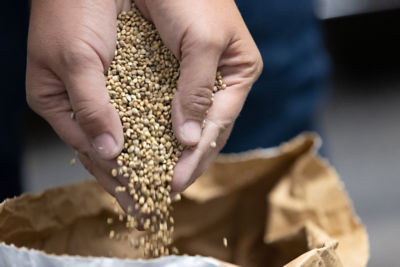Causal Agent
Phytophthora capsici
Phytophthora spp.
Distribution
Worldwide
Symptoms
Phytophthora capsici and other Phytophthora spp. can cause a range of symptoms in cucurbits from damping-off in young seedlings to crown and root rot, leaf spots, foliar blights and pre- and post-harvest fruit rots in mature plants. Symptoms of Phytophthora crown and root rot often manifest quickly, with plant death occurring within a few days of symptom onset. Often, affected plants exhibit a sudden, permanent wilt. Stems can collapse while the foliage of wilted plants remains green. Water-soaking develops in the roots, crown and lower stem near the soil line. Tissues become soft, turning from a healthy white to tan-to dark brown. In advanced stages, the lateral roots slough off and eventually the entire root system may be destroyed.
 Squash fruit infection.
Squash fruit infection.
Conditions for Development
These Phytophthora spp. survive from one season to the next in infected cucurbit tissue or in tissue of one of its other hosts (e.g., eggplant, pepper and tomato). This organism is able to disperse itself as zoospores that are released from sporangia into surface and irrigation water, and also as sporangia that are released into the air. Over-irrigation, heavy rainfall and poor drainage favor Phytophthora crown and root rot. High temperatures in mid- and late-season further stress already weakened plants and the disease can progress rapidly. Phytophthora crown and root rot incidence is greatest in low lying areas of fields where soil remains saturated for extended periods. Increasing the frequency and/or duration of irrigation will increase the incidence of this disease. Favorable conditions for this pathogen include soil temperatures above 18°C (65°F) and prolonged wet periods with air temperatures between 24–29°C (75–85°F).
Control
No single method is available to provide adequate control of Phytophthora crown and root rot. Cultural practices shown to reduce infection include irrigation management (e.g., drip irrigation) and high plant beds to improve drainage. When possible, avoid crop rotation with pepper and, to a lesser degree, other solanum species (e.g., eggplant, tomato). Additional practices to manage the disease include pathogen exclusion by following good sanitation and cultural practices. Fungicide sprays and soil drenches have also been shown to be effective.




